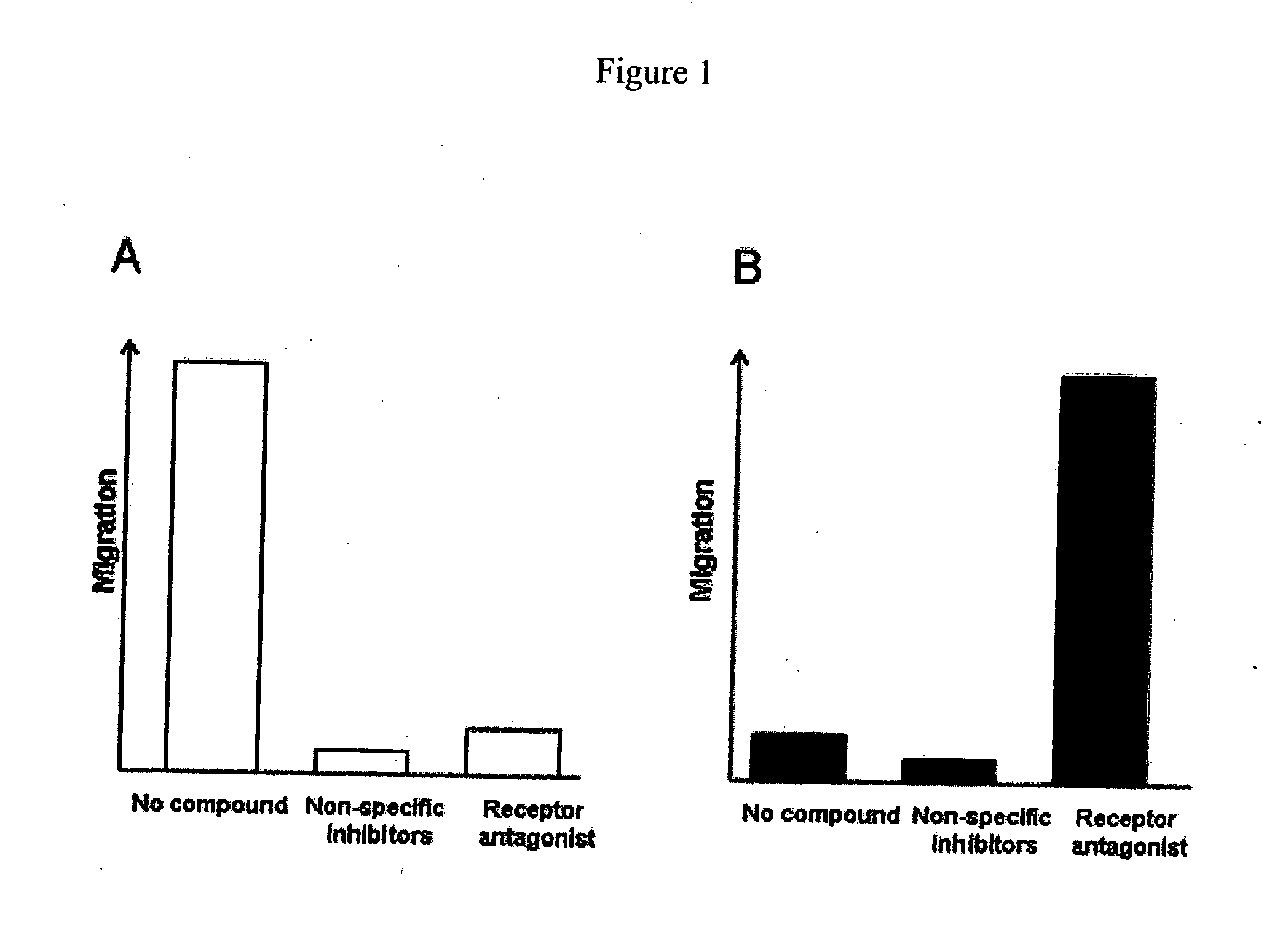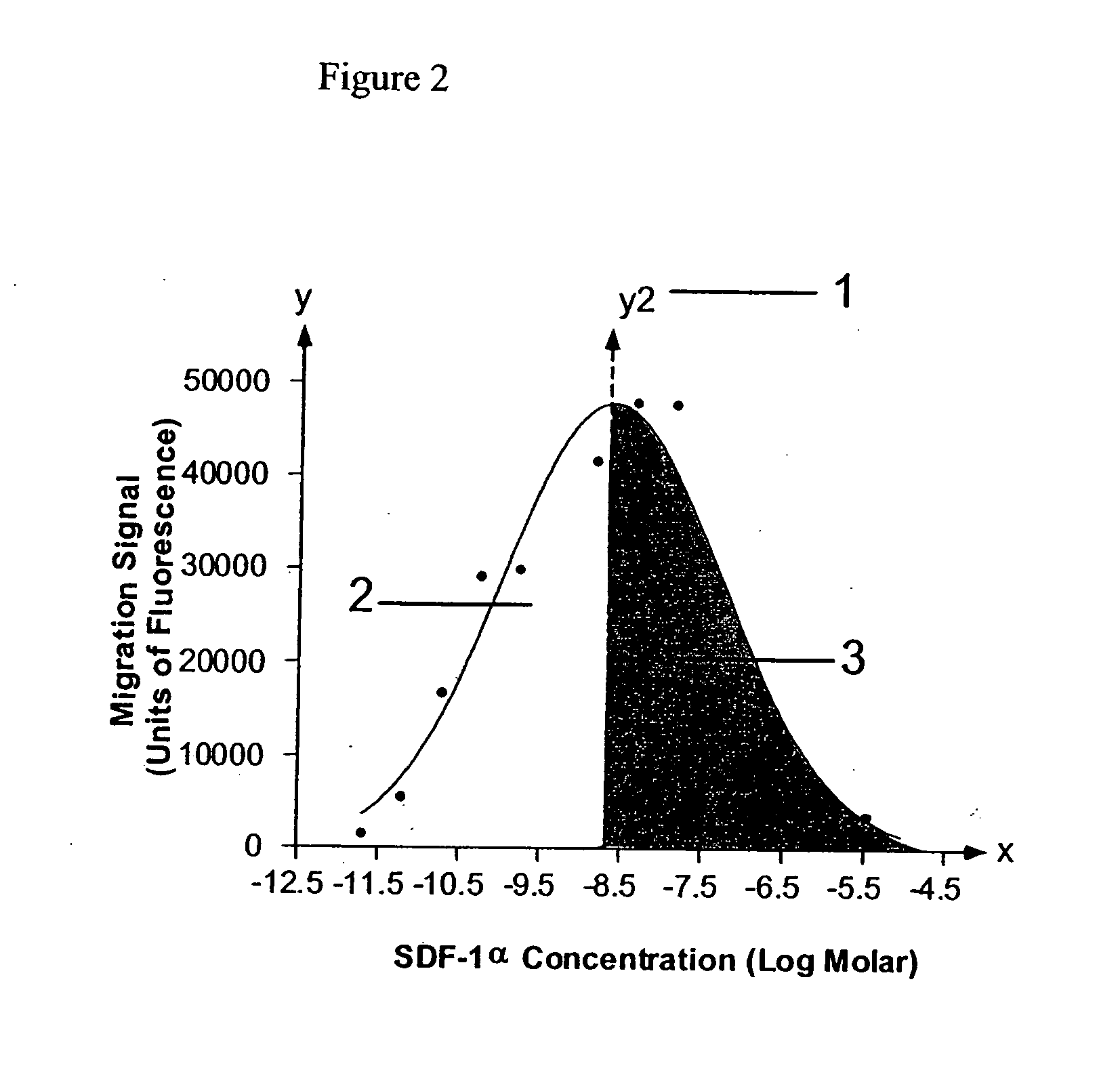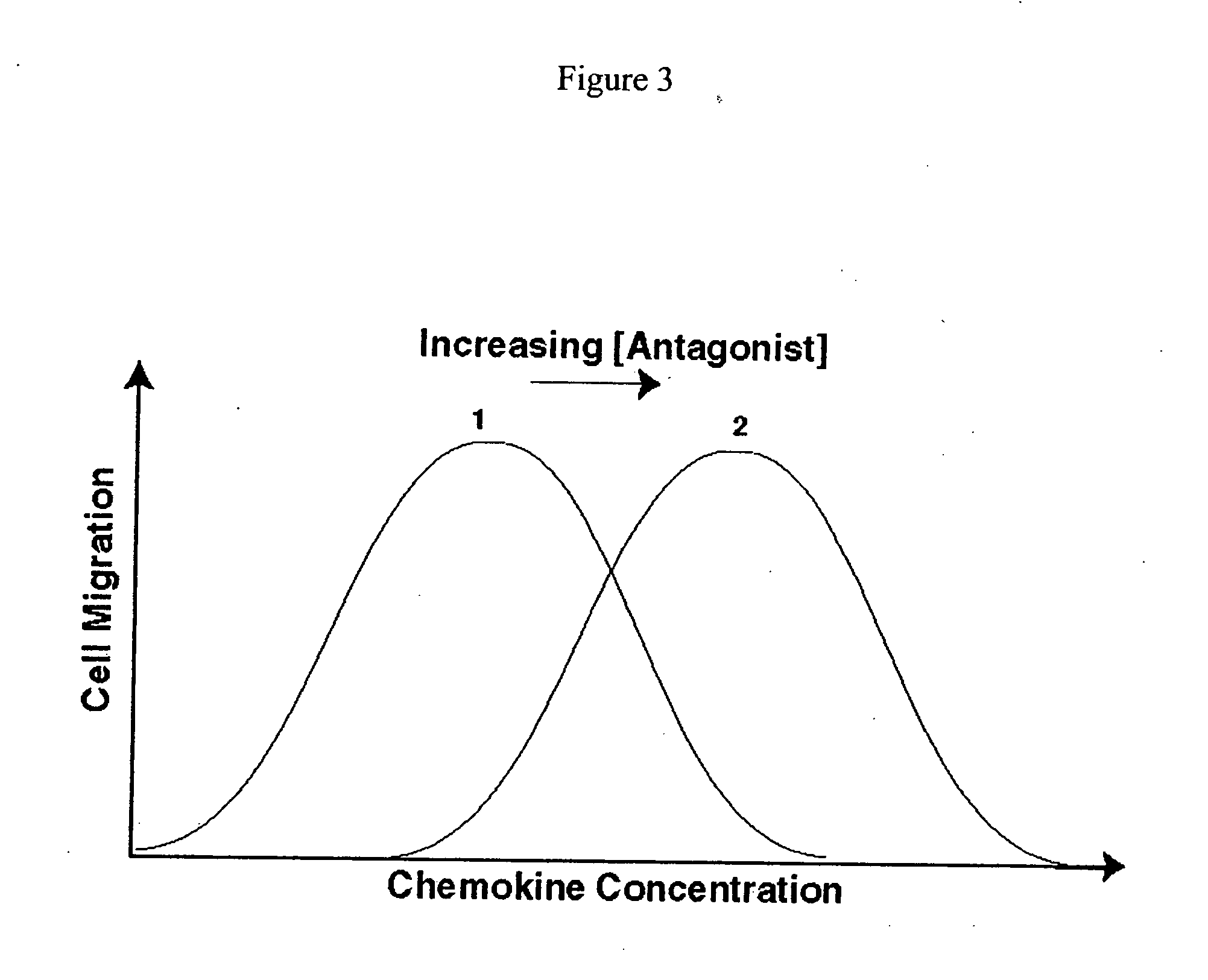Cell migration assay
a cell migration and assay technology, applied in the field of assays, can solve the problems of slow discovery and development, inability to identify all clinically important molecules in conventional drug discovery formats of chemoattractant receptor antagonists, and inability to distinguish genuine antagonists
- Summary
- Abstract
- Description
- Claims
- Application Information
AI Technical Summary
Benefits of technology
Problems solved by technology
Method used
Image
Examples
example 1
Determining Inhibitory Concentration of SDF (CXCR4)
[0067] To obtain a dose response curve for activated lymphocytes expressing cell surface CXCR4, a conventional cell migration assay was used (Bacon et al., 1988; Penfold et al., 1999). Cells were harvested by centrifugation and then resuspended in cell migration buffer (Hank's balanced salt solution (HBSS) / 0.1% bovine serum albumin (BSA) at 2.5×106 cells / ml. The CXCR4 ligand stromal-derived factor (SDF-1) was prepared in a concentration series (0.1 nM to 10 mM) by serial dilution in cell migration buffer. At low concentrations, SDF activates cell migration of CXCR4—bearing activated lymphocytes.
[0068] SDF ligand was loaded in the bottom chamber of a ChemoTx® cell migration apparatus (5 μm pore polycarbonate polyvinylpyrrolidone-coated filters (Neuroprobe; Gaithersburg, Md.); 29 μl / well) and 20 μl of cell suspension was placed in the upper chamber. The cells were incubated at 37° C. for 150 minutes. The assay was terminated by remov...
example 2
Validation of the RAM Assay Using a Viral Polypeptide Antagonist of CXCR4
[0070] In the RAM assay, antagonists of chemokine receptors are identified by their ability to activate migration of cells that are incubated with inhibitory chemokine concentrations. To validate the RAM assay, the viral chemokine, vMIP-II, was used as a CXCR4 antagonist. vMIP-II binds with high affinity to CXCR4, blocking receptor signaling and inhibiting cell migration, competing with CXCR4's usual ligand, SDF (Kledal et al., 1997). If CXCR4 expressing cells that are immobilized by inhibitory concentrations of SDF are activated to migrate in the presence of vMIP-II with increased migration, this result would verify the RAM assay principle. For reference and as a control, a conventional cell migration assay was performed. In the conventional assay format, cell migration is inhibited by vMIP-II.
[0071] Cell migration was measured using the two formats with the corresponding amounts of SDF chemokine:
[0072] (I) ...
example 3
Validation of RAM Assay Using Known Small Molecule Antagonists of CXCR3, CXCR4 and CCR1
[0076] RAM assays were performed as described in Example 2, except previously identified small molecule antagonists instead of vMIP-II were used, as well as additional cell types as described in Table 2.
TABLE 2Experimental variablesAntagonist1ReceptorLigand(s)CellsRAMAG-1CXCR3I-TAC (250 nM),activated humanIP-10lymphocytesRAMAG-2CXCR4SDF-1CXCR4-expressingMOLT-4 cells (humanT lymphoblast;American Type TissueCollection (ATCC);Manassas, VA)RAMAG-3CCR1MIP-1αTHP-1 cells (humanmonocytic; ATCC)
1As defined using a conventional cell migration assay and further independently confirmed.
2Inhibitory concentrations determined as in Example 1.
[0077] In the RAM assay, activated lymphocytes incubated in the presence of increasing concentrations of RAMAG-1 and the CXCR3 ligand 1-TAC at 250 nM, cell migration was activated at less than 1 μM (FIG. 6A); as RAMAG-1 concentration increased, migration increased, reach...
PUM
| Property | Measurement | Unit |
|---|---|---|
| inhibitory concentration | aaaaa | aaaaa |
| time | aaaaa | aaaaa |
| physical interaction | aaaaa | aaaaa |
Abstract
Description
Claims
Application Information
 Login to View More
Login to View More - R&D
- Intellectual Property
- Life Sciences
- Materials
- Tech Scout
- Unparalleled Data Quality
- Higher Quality Content
- 60% Fewer Hallucinations
Browse by: Latest US Patents, China's latest patents, Technical Efficacy Thesaurus, Application Domain, Technology Topic, Popular Technical Reports.
© 2025 PatSnap. All rights reserved.Legal|Privacy policy|Modern Slavery Act Transparency Statement|Sitemap|About US| Contact US: help@patsnap.com



